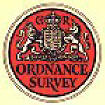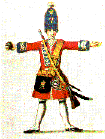| The Devon Brinsmeads decade by decade | 1790-1800
|
||


The Ordnance of England was created in 1791. Their first map was the Mudge map of Kent published ten years later in 1801. |
In 1791, Grace Brinsmead, nee Vodden, the matriarch of the line died at age 90. Robert’s wife Jane (nee Bennett) died in 1795. John and Mary Brinsmead had four children, Elizabeth, born in 1791, Robert, born in 1794, Mary, born in 1797 and Rebecca, born in 1799. This branch of the family in 1800 looked like this: Henry (age 80) and Ann
Robert (widower, age 73) (renting the "town tenement" farm from Dennis Rolle Esq.) Mary (age 40) and William Hookway John (age 35) and Mary (nee Blackmore) John rents Late Allfords Farm from Lord Rolle throughout the decade.
Margaret (age 67)
Thomas and Susannah have two children in the decade, Elizabeth, born in 1793 and Francis, born in 1794. Both died a few days after their birth. In Alverdiscott, Henry and Elizabeth’s daughter Mary married John Puddicombe in 1795. This side of the family in 1800 looked like this: Richard Budd (widower, spouse of Francis)
Henry (age 64) and Elizabeth John Puddicombe (age 32) and Mary (age 24)
Thomas (age 60) and Susannah (age 46) living at Clarke’s Dodscott farm
On the other side of Great Torrington, in the village of Weare Giffard,
the local blacksmith John Beer and his wife Elizabeth had a daughter
Elizabeth in 1781.
|
||
 1795 is known as The Famine Year. There was a spate of food riots in the spring of 1795. Bad harvests left wheat in short supply, raising the price of bread for a growing population. The war with France prevented imports and fears of a revolution heightened. |
|||

The Seven Years War begins in 1796 when Britain, allied with Prussia, declared war on France and her allies Austria and Russia. |
|||
|
|
|||